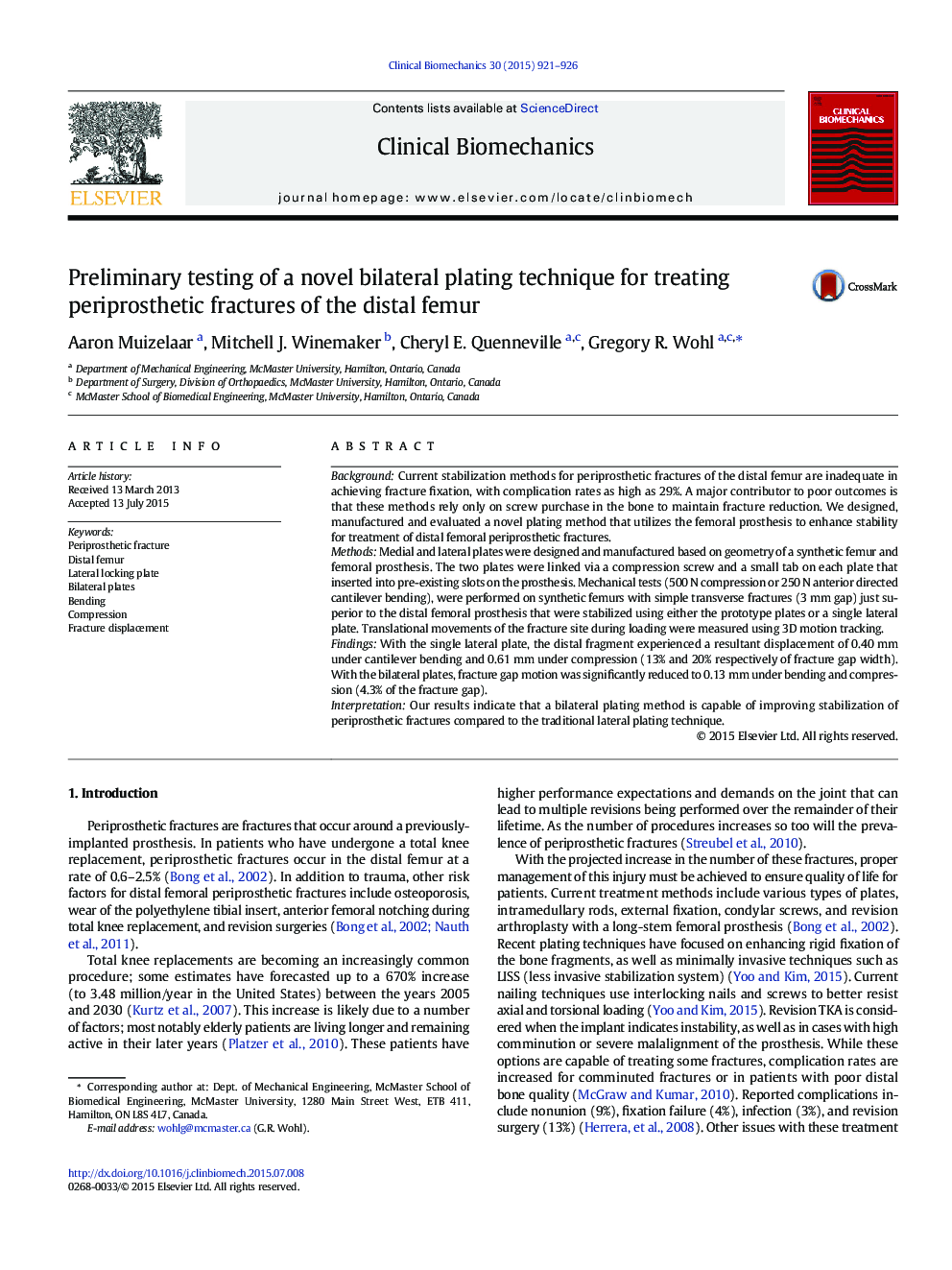| Article ID | Journal | Published Year | Pages | File Type |
|---|---|---|---|---|
| 4050215 | Clinical Biomechanics | 2015 | 6 Pages |
•We designed a bilateral plating technique to repair distal femur periprosthetic fractures.•3D fracture motion was measured using synthetic composite bones in compression and bending.•The bilateral plate reduced motion by 79% versus a single lateral plate in compression.•The bilateral plate reduced motion by 68% in cantilever anterior directed bending.•The novel bilateral plating technique could improve healing of complex periprosthetic fractures.
BackgroundCurrent stabilization methods for periprosthetic fractures of the distal femur are inadequate in achieving fracture fixation, with complication rates as high as 29%. A major contributor to poor outcomes is that these methods rely only on screw purchase in the bone to maintain fracture reduction. We designed, manufactured and evaluated a novel plating method that utilizes the femoral prosthesis to enhance stability for treatment of distal femoral periprosthetic fractures.MethodsMedial and lateral plates were designed and manufactured based on geometry of a synthetic femur and femoral prosthesis. The two plates were linked via a compression screw and a small tab on each plate that inserted into pre-existing slots on the prosthesis. Mechanical tests (500 N compression or 250 N anterior directed cantilever bending), were performed on synthetic femurs with simple transverse fractures (3 mm gap) just superior to the distal femoral prosthesis that were stabilized using either the prototype plates or a single lateral plate. Translational movements of the fracture site during loading were measured using 3D motion tracking.FindingsWith the single lateral plate, the distal fragment experienced a resultant displacement of 0.40 mm under cantilever bending and 0.61 mm under compression (13% and 20% respectively of fracture gap width). With the bilateral plates, fracture gap motion was significantly reduced to 0.13 mm under bending and compression (4.3% of the fracture gap).InterpretationOur results indicate that a bilateral plating method is capable of improving stabilization of periprosthetic fractures compared to the traditional lateral plating technique.
